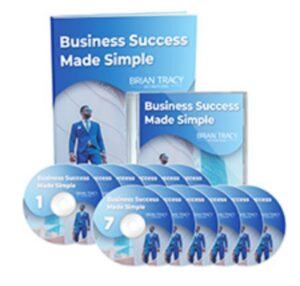Persuasion is influencing someone’s beliefs, attitudes, or actions through communication. In sales, persuasion is crucial for convincing potential customers to purchase your products or services. It involves understanding the psychology of decision-making and using that knowledge to craft compelling messages that resonate with your audience.

Introduction to the Art of Persuasion in Sales
This article aims to provide a comprehensive overview of persuasion in sales, covering fundamental techniques and strategies to enhance sales effectiveness. By understanding and applying persuasion principles effectively, you can improve your ability to influence others and achieve your sales goals.
This article will explore the intersection of persuasion, psychology, and human behavior, highlighting how understanding these concepts can help you become a more effective salesperson. By leveraging psychological principles and insights into human behavior, you can tailor your sales approach to better align with your audience’s needs and motivations, ultimately leading to more successful outcomes.
Persuasion is a crucial skill in sales, as it involves convincing potential customers to buy your products or services. It’s about understanding the needs and motivations of your audience and effectively communicating how your offering can fulfill those needs. Here are some key elements of persuasion in sales:
Understanding the Audience: Persuasion begins with understanding your audience’s needs, desires, and pain points. This understanding allows you to tailor your message to resonate with them personally.
Building Rapport: Building rapport is essential for connecting with your audience. People are more likely to be persuaded by someone they like and trust. Show genuine interest in your audience, listen actively, and empathize with their situation.
Establishing Credibility: Credibility is crucial in persuasion. Customers are more likely to be persuaded by someone they perceive as knowledgeable and trustworthy. Demonstrate your expertise in your field and provide evidence to support your claims.
Creating a Compelling Narrative: Storytelling is a powerful tool in persuasion. Create a narrative highlighting the benefits of your product or service in a way that resonates with your audience. Use anecdotes, case studies, and testimonials to illustrate your points.
Addressing Objections: Anticipate and address your audience’s objections or concerns. Be prepared to provide evidence and explanations to overcome these objections and reassure your audience.
Using Persuasive Language: Use clear, concise, and persuasive language. Highlight the benefits of your offering and use persuasive techniques such as scarcity, social proof, and authority to enhance your message.
Demonstrating Value: Clearly articulate your product or service’s value proposition. Show how it can solve your audience’s problems or improve their lives meaningfully.
Creating a Sense of Urgency: To create a sense of urgency, highlight limited-time offers or emphasize the consequences of not taking action. This can motivate your audience to make a decision more quickly.
Following Up: Following up with your audience is essential in maintaining the relationship and reinforcing your message. Keep the lines of communication open and continue to provide value even after the sale.
Seeking Feedback: Finally, seek feedback from your audience to understand what worked and what didn’t. Use this feedback to refine your approach and improve your persuasive skills.

Understanding Your Audience: The First Step to Effective Selling
Understanding your audience is the foundation of effective selling. It involves conducting thorough audience research and customer profiling to understand their needs, preferences, and pain points. By understanding your audience, you can tailor your sales pitch to resonate with them personally, increasing your chances of success.
Customer profiling involves creating detailed profiles of your ideal customers based on demographics, psychographics, and behavior. This helps you better understand who your target audience is and what motivates them to make a purchase.
Empathy is a critical component of understanding your audience. By putting yourself in your customers’ shoes, you can better understand their needs and emotions, allowing you to connect with them on a deeper level. Empathy enables you to build rapport with your audience, making them more receptive to your sales pitch.
Customizing your pitch to meet the audience’s needs and pain points is crucial for effective selling. By addressing your audience’s specific challenges and concerns, you can demonstrate how your product or service can solve their problems and improve their lives. This personalized approach makes your pitch more compelling and increases the likelihood of a successful sale.
Understanding your audience is indeed the first step to effective selling. It involves gaining insights into your target market’s demographics, psychographics, and behavior. By understanding your audience, you can tailor your sales approach to meet their specific needs and preferences, increasing the likelihood of making a successful sale.
There are several vital aspects to consider when understanding your audience:
Demographics: This includes age, gender, income level, education, and location. Understanding your audience’s demographics can help you tailor your messaging and offerings to better appeal to them.
Psychographics: Psychographics refers to your audience’s attitudes, values, interests, and lifestyles. By understanding your audience’s psychographics, you can create messaging that resonates with their beliefs and motivations.
Behavior: Understanding the behavior of your audience, such as their buying habits, preferences, and decision-making process, can help you tailor your sales approach to better meet their needs.
Challenges and Pain Points: Understanding your audience’s challenges and pain points can help you position your product or service as a solution to their problems, making your offering more compelling.
Communication Preferences: Different audiences may prefer different communication channels and styles. Understanding your audience’s communication preferences can help you reach them more effectively.
By taking the time to understand your audience, you can tailor your sales approach to meet their specific needs and preferences, increasing the likelihood of making a successful sale.
In conclusion, leveraging empathy and customizing your pitch is essential to effective selling. By taking the time to research your audience and tailor your approach to meet their needs, you can increase your chances of success and achieve your sales goals.

Crafting Your Message: The Power of Clarity and Emotion
Crafting a compelling message is crucial in sales, as it can help you capture your audience’s attention and persuade them to take action. Two critical elements of a compelling message are clarity and emotion.
Clarity:
Simplicity: Keep your message simple and easy to understand. Avoid using jargon or complex language that might confuse your audience.
Focus on Benefits: Communicate the benefits of your product or service. Explain how it can solve your audience’s problems or improve their lives.
Call to Action: Clearly state what you want your audience to do next. Whether it’s making a purchase, signing up for a newsletter, or contacting you for more information, make it easy for them to take the next step.
Emotion:
Storytelling: Use storytelling to evoke emotion in your audience. Share anecdotes or case studies demonstrating how your product or service has positively impacted others.
Appeal to Values: Identify essential values to your audience and appeal to them in your message. For example, if your audience values sustainability, highlight how your product or service is eco-friendly.
Use of Imagery: Use imagery to evoke emotion and visually represent your message. This could include photos, videos, or graphics that help convey your message compellingly.
By crafting a clear and emotionally engaging message, you can capture your audience’s attention and increase the likelihood of persuading them to take action.
Here’s a breakdown of these elements and how to balance them effectively:
Clear and Concise Messaging in Persuasion:
Clarity: Clear messaging is vital because it helps your audience understand your offer and its benefits. Avoid using complex language or industry jargon that might confuse your audience.
Conciseness: Keep your message concise and to the point. Focus on your product or service’s most important benefits and features, and avoid overwhelming your audience with unnecessary information.
Emotional Appeal in Sales: Pathos and Storytelling:
Appealing to your Audience’s Emotions: this will create a stronger connection and make your message more memorable.
Storytelling: Storytelling is a powerful way to evoke emotion in your audience. Share stories illustrating how your product or service has positively impacted others, creating a sense of empathy and connection.
Balancing Information and Persuasion:
Focus on Benefits: When balancing information and persuasion, focus on the benefits of your product or service rather than just its features. Explain how your offering can solve your audience’s problems or improve their lives.
Provide Evidence: Support your claims with evidence, such as testimonials, case studies, or data. This helps build credibility and reinforces your persuasive message.
Call to Action: Clearly state what you want your audience to do next. Whether it’s making a purchase, signing up for a trial, or contacting you for more information, make it easy for them to take the next step.
By balancing clear and concise messaging with emotional appeal and providing relevant information, you can create a persuasive sales message that resonates with your audience and drives action.

Demonstrating Expertise and Credibility
Demonstrating expertise and credibility is crucial in sales, as it helps build trust with your audience and increases the likelihood of a successful sale. Here are some strategies to demonstrate your expertise and credibility:
Provide Value-Driven Content: Create content that provides valuable insights and information to your audience. This could include blog posts, whitepapers, or videos showcasing your field knowledge and expertise.
Use Case Studies and Testimonials: Share case studies and testimonials from satisfied customers to demonstrate the real-world impact of your product or service. This can help build trust with potential customers and showcase your credibility.
Highlight Relevant Experience: Highlight relevant experience or qualifications demonstrating your field expertise. This could include years of experience, relevant certifications, or awards.
Engage in Thought Leadership: Engage in thought leadership activities such as speaking at industry events, participating in webinars, or writing articles for industry publications. This can help establish you as a trusted authority in your field.
Be Transparent and Authentic: Be transparent about your products or services and avoid making exaggerated claims. Authenticity builds trust with your audience and helps establish your credibility.
Provide Excellent Customer Service: Excellent customer service can help build customer trust and showcase your commitment to their satisfaction. This can lead to positive reviews and referrals, further enhancing your credibility.
Demonstrating your expertise and credibility can build trust with your audience and increase the likelihood of converting them into loyal customers.
Establishing trust through proven expertise is essential in sales. Here are some strategies to convey authority and reliability in your field:
- Share Testimonials and Case Studies: Share testimonials from satisfied customers highlighting their favorable experiences with your product or service. Case studies can also be compelling, providing detailed examples of how your offering has helped others.
- Highlight Relevant Experience: Highlight your relevant experience and qualifications to demonstrate your expertise in your field. This could include years of experience, relevant certifications, or any awards or recognition you have received.
- Provide Valuable Content: Create and share valuable content demonstrating your knowledge and expertise. This could include blog posts, articles, or videos that provide insights and tips related to your industry.
- Engage in Thought Leadership: Engage in activities that position you as a thought leader in your field. This could include speaking at industry events, participating in webinars, or writing for industry publications.
- Be Transparent and Authentic: Be honest and transparent in customer interactions. Authenticity builds trust and credibility with your audience.
- Provide Excellent Customer Service: Excellent customer service can help build trust with your customers and demonstrate your commitment to their satisfaction.
By implementing these strategies, you can convey authority and reliability in your field, establishing trust with your audience and increasing the likelihood of converting them into customers.

Building Rapport and a Relationship with Your Prospects
Building rapport and a relationship with your prospects is essential in sales, as it helps establish trust and makes them more receptive to your message. Here are some strategies to build rapport and cultivate relationships with your prospects:
Active Listening: Listen actively to your prospects to understand their needs, concerns, and preferences. Show genuine interest in what they say and ask open-ended questions to encourage them to share more.
Empathy: Show empathy towards your prospects by understanding and acknowledging their feelings and perspectives. This helps build trust and creates a stronger connection.
Personalization: Personalize your interactions with prospects by addressing them by name and referencing previous conversations or interactions. This shows that you value them as individuals and are invested in building a relationship.
Provide Value: Show value to your prospects by offering helpful insights, tips, or resources related to their needs and interests. This demonstrates your expertise and positions you as a trusted advisor.
Follow-up: Promptly follow up with your prospects to keep the conversation going and maintain momentum. This shows that you are committed to their needs and reinforces your interest in building relationships.
Be Authentic: Be authentic and genuine in your interactions with prospects. People can sense authenticity, and being true to yourself helps build trust and credibility.
Stay In Touch: Stay in touch with your prospects even if they’re not ready to buy immediately. Send relevant updates, share interesting content, or check in periodically to see how they’re doing. This helps keep you on top of your mind and reinforces your relationship.
Here’s how you can leverage genuine interest and active listening in these aspects, along with strategies for long-term relationship building and effective follow-up:
Genuine Interest and Active Listening:
Focus on the Prospect: Show genuine interest in the prospect as a person, not just a potential sale. Ask open-ended questions and listen actively to understand their needs and challenges.
Empathize and Validate: Empathize with the prospect’s situation and validate their feelings and concerns. This shows that you care about their well-being and are not just focused on making a sale.
Demonstrate Understanding: Reflect on what the prospect has said to demonstrate that you have listened to and understand their perspective. This helps build trust and rapport.
Long-Term Relationship Building:
Focus on Value: Instead of closing a sale, focus on providing value to the prospect. This could include sharing relevant content, offering advice, or connecting them with resources that can help them.
Be Consistent: Consistency is critical in building long-term relationships. Stay in touch with the prospect regularly, even if they are not ready to buy immediately. This helps maintain the relationship and keeps you top of your mind.
Personalize Interactions: Personalize your interactions with the prospect based on their preferences and interests. This shows that you value them as an individual and are invested in building a relationship.
Follow-Up Strategies:
Timely Follow-Up: Follow up with the prospect promptly after your initial interaction. This shows that you are proactive and committed to meeting their needs.
Provide Value in Follow-Up: Use follow-up interactions to provide additional value to the prospect. This could include sharing relevant information, offering solutions to their problems, or addressing concerns.
Stay Connected: Stay connected with the prospect even after they purchase. Continue to provide value and support to reinforce the relationship and encourage repeat business.
By focusing on genuine interest, active listening, long-term relationship building, and effective follow-up, you can build strong relationships with your prospects, leading to more successful sales outcomes.

Persuasion Techniques and Psychological Triggers
Persuasion techniques and psychological triggers play a significant role in sales and marketing. Here are some fundamental techniques and triggers you can leverage:
1. Reciprocity: People are more likely to feel obligated to reciprocate when they receive something for free. To invoke this principle, offer value upfront, such as free samples, trials, or helpful content.
2. Scarcity: Creating a sense of scarcity or urgency can drive action. Highlight limited quantities, limited-time offers, or exclusive deals to encourage immediate decision-making.
3. Social Proof: People are influenced by the actions and opinions of others. Use testimonials, reviews, and case studies to demonstrate social proof and show that others have benefited from your product or service.
4. Authority: People tend to trust and comply with authority figures. Establish your expertise and credibility through certifications, endorsements, or by showcasing your experience in the industry.
5. Consistency: Once people commit to something, they are more likely to stick with it. Use small, initial commitments to lead to larger ones. For example, start with a free trial before asking for a purchase.
6. Likability: People are more likely to be persuaded by those they like. To increase likability, build rapport with your audience, show empathy, and find common ground.
7. Contrast Principle: Presenting two options—one significantly more expensive than the other—can make the cheaper option seem more appealing. Use this principle in pricing strategies or when presenting product options.
8. Anchoring: Presenting a high-priced option first can make subsequent options seem more affordable. Use this principle to guide your audience toward a specific choice.
9. Storytelling: Engage your audience emotionally through storytelling. Share narratives that resonate with their experiences or desires making your message more memorable and persuasive.
10. Framing: How information is presented can significantly impact perception. Frame your message positively, emphasizing benefits over features, and use language that evokes positive emotions.
By understanding and applying these persuasion techniques and psychological triggers, you can enhance your sales and marketing efforts and increase your effectiveness in influencing your audience.
Applying Psychological Triggers Responsibly:
Be honest and transparent in your messaging.
Avoid using tactics that manipulate or deceive your audience.
Ensure that the benefits and value of your offering are genuine.
Respect your audience’s autonomy and right to make informed decisions.
Case Examples:
Amazon often uses scarcity by displaying the remaining stock of a product to encourage immediate purchase.
Apple effectively uses the principle of consensus by showcasing the popularity of its products through customer testimonials and reviews.
Charity organizations often leverage reciprocity by sending small gifts, such as address labels or stickers, to encourage donations.
By ethically understanding and applying these persuasion techniques, you can enhance your sales and marketing efforts and build stronger relationships with your audience.

Conclusion: Integrating Persuasion into Your Sales Strategy
In conclusion, integrating persuasion into your sales strategy can significantly enhance your effectiveness in influencing others and achieving your sales goals. Here’s a recap of the key persuasion strategies covered in this article:
Reciprocity: Offering value upfront can create a sense of obligation in others to reciprocate.
Scarcity: Creating a sense of scarcity or urgency can motivate people to take action.
Authority: Demonstrating expertise and credibility can increase your influence.
Consistency: Encouraging small commitments can lead to larger ones over time.
Liking: Building rapport and likability can make others more receptive to your message.
Consensus: Showing that others have chosen your product or service can influence others to follow suit.
It’s essential to practice and refine your persuasive skills continuously. Effective selling is an art that involves understanding your audience, tailoring your message to their needs, and using persuasion techniques ethically. By continuously learning and adapting your approach, you can become a more successful salesperson and achieve your goals.
This article explored various persuasion techniques, such as reciprocity, scarcity, authority, consistency, liking, and consensus. When used responsibly and ethically, these techniques can help you build rapport with your audience, establish credibility, and close more deals.
It’s important to remember that effective persuasion is not about manipulating or deceiving customers. Instead, it’s about understanding their needs and concerns and presenting your product or service as the solution to their problems. By building genuine relationships with your customers and providing value, you can enhance your persuasive abilities and achieve long-term success in sales.
Learn more about Howard by Clicking Here!
Be healthy to maximize sales success!


